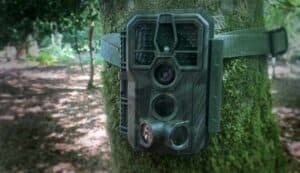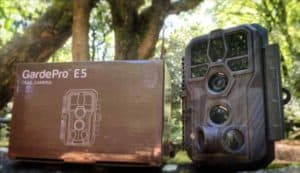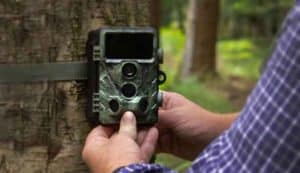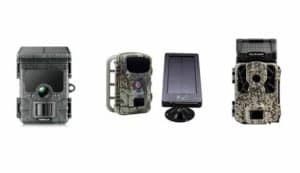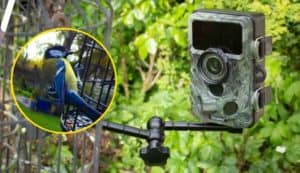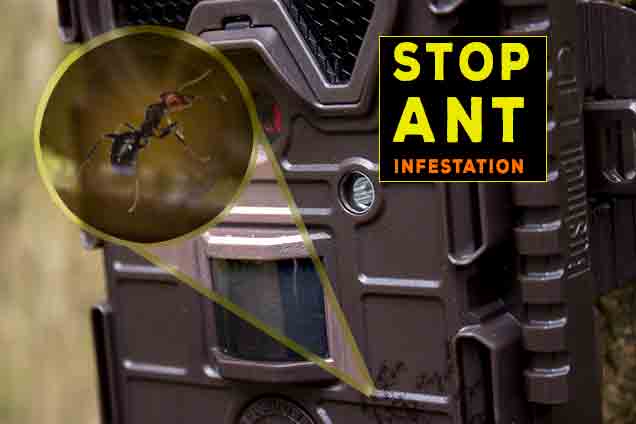

Editor & Article Writer for Outdoor Wilds
How to Keep Ants Out of Trail Cameras
Trail camera season is the time when ants and other tiny critters are in full swing.
Anyone who has had one of their trail cameras infested with ants will tell you that it’s no joke. Knowing how to keep ants out of a trail camera is important as they can cause havoc with the electronics inside the camera.
Ants are attracted to the electromagnetic fields emitted from a trail camera and they particularly like batteries. If they get inside the housing, they can cause all sorts of damage. Short circuits, damage to seals and so on.
It’s worth noting that most, if not all trail camera manufacturers do not cover you for “ant damage” under the camera warranty.
To avoid this happening, there are a number of products to use and techniques to stop ants from entering a trail camera.
In terms of products it comes down to personal preference as to which one you prefer.
However they’re all effective in keeping any North American species [1] of ant from getting inside your trail cam and causing damage.
Seal Any Openings On The Camera Housing
The first job is to seal any openings on the camera housing itself. Although most trail cameras are IP66 rated to stop water ingress, most cameras do have small holes at the bottom of the case.
To close off the holes, you can use any form of tape, electrical tape, duct tape etc.
A tiny amount of silicone works or even some petroleum jelly. Use a Q-tip to apply sparingly.
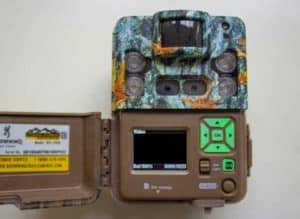
Insecticides
With the holes closed off, I’d suggest using some type of insecticide to ward off any ants from getting close to the camera.
Permethrin Insect Repellent
Permethrin is a popular choice for keeping ants at bay. Only spray the tree strap of the camera carefully when strapped to the tree and not on the camera itself.
Also spray just above and below the camera directly onto the tree. Permethrin must be used with caution. Always read the manufacturer’s instructions when handling this insecticide.
An alternative to spraying Permethrin to the tree itself and the nylon tree strap, is to spray the repellent onto some small flat cotton pads cut into strips and leave to dry.
Place the treated cotton strips once dry inside the housing of the camera door.
Keep any surplus cotton strips inside a zip lock bag so you don’t lose them and take them with you when you next check on the camera so you have some treated strips to replace the old ones if required.
Home Defence Granules
If you don’t like the Permethrin idea, then using a pinch of Home Defence granules placed inside the housing door of the trail camera is just as effective.
The 3rd method I know some people use with success is with a Borax solution to keep ants away from the tree.
Borax and sugar solution
Mix 1 cup warm water with ½ cup sugar and 3 tablespoons of Borax. Mix it together until the sugar has dissolved.
Place some cotton balls into the liquid solution to soak up. Once dry, place the treated cotton balls at the base of the tree.
The ants will eat the cotton balls and take it back to the nest.
With this method make sure it’s not going to rain for at least several days after placing the cotton balls at the base of the tree.
What to Do If Ants Have Infested Your Camera
If you follow these methods above then it’s very unlikely that you’ll have a problem with ants infestation inside your trail camera.
If however, you have a trail camera that’s already been infested, then the quick solution is to place the camera inside a zip lock bag and leave inside a freezer for at least 24 hours.
Read the manufacturer’s specification first to make sure the camera is designed to cope with these low temperatures.
Prior to putting the camera inside the freezer, remove any debris left by the ants.
Final Thoughts
In summary. Close off any holes on the camera housing, using tape, silicone or vaseline.
Use one of the types of pesticides mentioned above and follow carefully the techniques I mentioned. Then you should be good to go for an ant free season.
Lastly, always handle pesticides with caution and read the instructions on the bottle or packaging before applying pesticides to material.
Read here for more general information on trail camera maintenance to keep your trail cam performing to its maximum for many seasons ahead.
Good luck, and happy scouting!
Trail Camera Posts
Popular Posts
As an Amazon Associate I earn from qualifying purchases. Thank you for helping to support the site.




